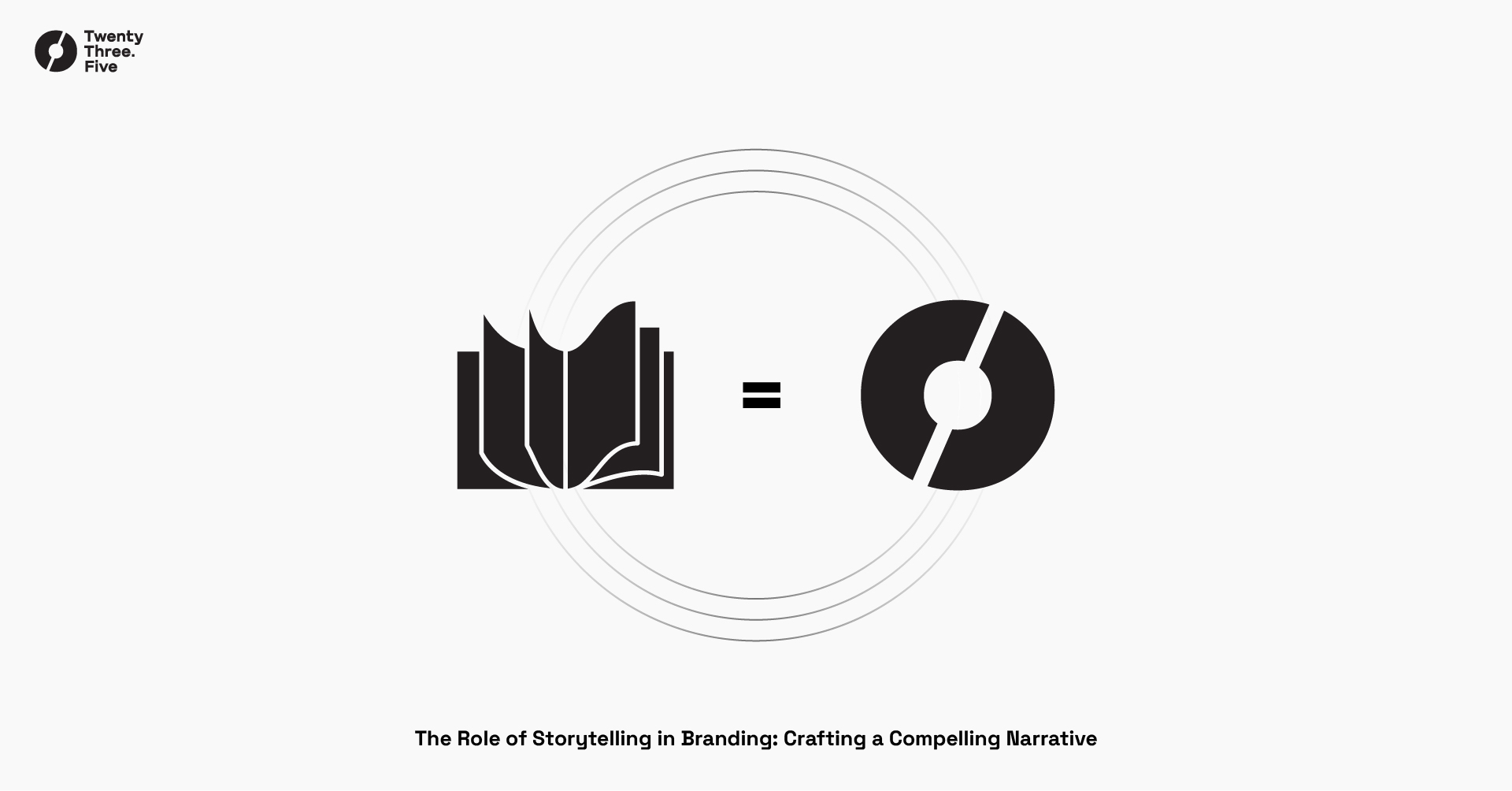
In the ever-evolving landscape of marketing and brand communication, one strategy has remained consistently powerful: storytelling. Storytelling isn’t just about sharing tales; it’s a dynamic tool that has the potential to create lasting connections between brands and their audiences. In this blog post, we will explore the role of storytelling in branding, the emotional bonds it forges, and how it helps build brand identity. We’ll delve into the elements of effective brand storytelling and provide practical guidance on crafting your brand’s narrative. Along the way, we’ll examine real-world case studies that demonstrate the incredible impact of storytelling in the world of branding.
The Power of Brand Storytelling
What is Brand Storytelling?
At its core, brand storytelling is the art of conveying your brand’s identity, values, and purpose through narratives. It goes beyond traditional marketing approaches, which often focus on features and benefits. Instead, brand storytelling is about creating a compelling narrative that engages and resonates with your audience.
Connecting Emotionally
One of the most significant advantages of storytelling is its ability to create emotional connections. When people hear a well-crafted story, they become emotionally invested. This emotional connection can lead to brand loyalty, advocacy, and a sense of belonging.
Consider the “Like a Girl” campaign by Always. By sharing stories of young girls’ confidence and strength, the brand redefined the phrase “like a girl” and empowered a generation. The emotional impact of these stories resonated deeply with viewers and garnered widespread acclaim.
Building Brand Identity
Stories play a pivotal role in shaping a brand’s identity. They convey the brand’s mission, values, and personality. A strong brand identity not only sets you apart from the competition but also helps consumers relate to your brand on a personal level.
For example, the outdoor apparel brand Patagonia has built a brand identity centered around environmental advocacy and sustainability. Their stories of protecting the environment align with their core values and attract consumers who share those values. Even as recently as the summer of 2023, Patagonia unveiled new plans and commitments to environmental protections.
Elements of Effective Brand Storytelling
Authenticity
Authenticity is the cornerstone of effective brand storytelling. Authentic stories are genuine, honest, and transparent. They build trust and relatability with your audience. Authenticity means staying true to your brand’s values and not trying to be something you’re not.
A brand that excels in authenticity is Dove. Their “Real Beauty” campaign features real women with diverse body types and celebrates natural beauty. Dove’s authentic message of self-acceptance has resonated with millions of people worldwide.
Conflict and Resolution
Compelling stories often revolve around conflict and resolution. Conflict introduces tension and keeps the audience engaged, while resolution provides closure and satisfaction. Brands can use this narrative structure to create engaging and memorable stories.
Consider the brand Nike, which frequently tells stories of athletes overcoming challenges and adversity to achieve greatness. These stories of struggle and triumph resonate with audiences, inspiring them to push their own limits.
Character Development
In brand storytelling, characters aren’t limited to fictional figures. Brands themselves can be characters with distinct personas. Developing your brand’s character involves defining its values, voice, and personality. This character should remain consistent throughout your storytelling.
A brand that has successfully developed a character is Apple. Known for its minimalist design, innovation, and user-centric approach, Apple’s brand character is synonymous with simplicity and elegance.
Visual Storytelling
While storytelling often conjures images of words and narratives, visual elements play a significant role in brand storytelling. Visual storytelling includes images, videos, graphics, and design elements that enhance your brand’s narrative.
Platforms like Instagram have capitalized on visual storytelling. Brands use captivating visuals to convey their stories and create a cohesive brand aesthetic.
During our own branding and design journey this year, we put a heavy emphasis on the visual storytelling aspects of our website, stationery, and social media assets. A great example of this can be found on our Odyssey page. The animations and words work together to convey a complex message is an elegant and cohesive way.
Crafting Your Brand Narrative
Know Your Audience
Effective storytelling starts with a deep understanding of your audience. Who are they? What are their interests, aspirations, and pain points? Understanding your audience’s desires and needs allows you to tailor your narrative to resonate with them.
For example, if you’re a fitness brand targeting health-conscious individuals, your stories might revolve around achieving personal fitness goals and leading a healthier lifestyle.
Define Your Brand’s Story
To craft a compelling brand narrative, start by defining your brand’s story. This story should encompass your brand’s origins, challenges, successes, and values. It should capture what makes your brand unique and why it matters.
The outdoor clothing brand The North Face tells a story of exploration and adventure. Their narrative revolves around helping people explore the great outdoors and conquer new challenges.
Consistency Across Channels
Maintaining consistency is crucial in brand storytelling. Your narrative should remain coherent across all brand touchpoints, whether it’s your website, social media, advertising campaigns, or customer interactions. Consistency builds a cohesive brand image and reinforces your narrative.
Measuring the Impact
To gauge the effectiveness of your brand storytelling efforts, you need to measure their impact. Metrics such as engagement, reach, conversions, and customer feedback can provide insights into how your audience is responding to your stories. Use these metrics to refine your storytelling strategies.
For instance, if you notice that a particular story resonates strongly with your audience on social media, you can create more content in a similar vein.
Creating a brand narrative and story is tough. Our flagship branding packages Orbit and Odyssey both dedicate intensive working sessions to better craft a brand story that will work for your brand and audience.
Let’s Craft a Brand Together
In the world of branding, storytelling is a formidable tool that goes beyond traditional marketing strategies. It forges emotional connections, shapes brand identity, and creates lasting impressions. Effective brand storytelling is marked by authenticity, conflict and resolution, character development, and the use of visuals.
To craft your brand’s narrative, start by understanding your audience and defining your story. Maintain consistency across all brand touchpoints and measure the impact of your storytelling efforts to refine your strategies.
If you’re ready to embark on the journey of crafting a compelling brand narrative, we’re here to help. Start a mission today to explore how we can elevate your brand through the power of storytelling.


